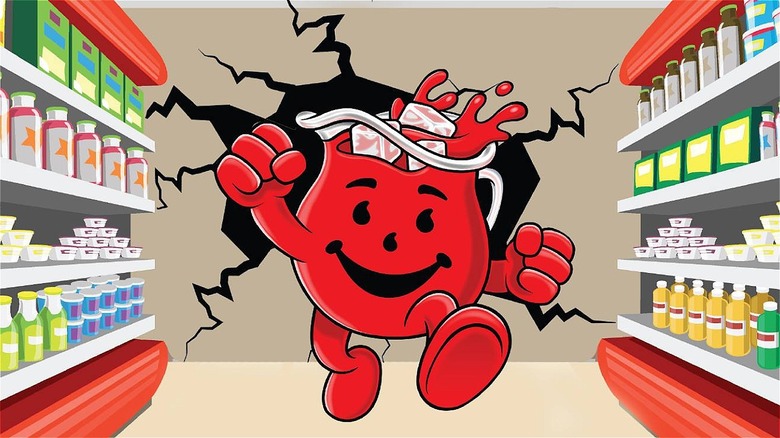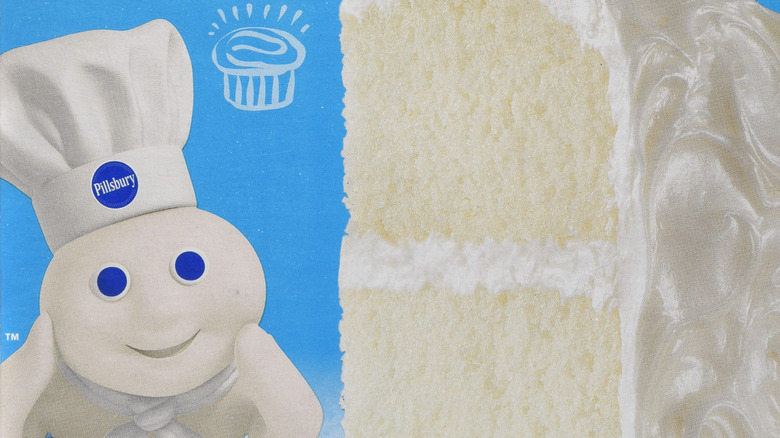The Real Reason Food Mascots Are So Effective At Marketing Products
Are you coo-coo for Cocoa Puffs? Do you believe that Trix is for kids, not silly rabbits? Is it even possible to take a sip of fruity Kool-Aid without bellowing, "Oh yeah!" and pretending to bust through a solid brick wall? Since the Golden Age of Advertising, brands have promoted their goods and services with the help of cheerful, cunning, and charismatic mascots. This strategy has been implemented for ages and has garnered plenty of success for companies. So, how do these ideas come to be? The answer typically lies within some of the most creative minds at renowned advertising agencies. Leo Burnett, for one, was the genius behind some of the most lovable representatives in marketing history, including Tony the Tiger (Frosted Flakes), Toucan Sam (Froot Loops), the Jolly Green Giant, and the Pillsbury Doughboy (per the Chicago Tribune).
For decades, these colorful characters have graced television screens during commercial breaks and have been imprinted on product packages throughout store shelves. But how, exactly, do mascots cause consumers to perceive food products differently? Do they actually help when it comes to brand association? In short, yes. And it all has to do with a brilliant blend of art and psychology.
Brand mascots are as convincing as they are cute. Here's why.
Whether it's the suave Chester Cheetah (Cheetos), the jovial Lucky the Leprechaun (Lucky Charms), or the dapper Mr. Peanut (Planters), fictional figures are often directly associated with food and beverage brands. Many of these beloved mascots have certain attributes in common — and certainly not by coincidence. According to The Takeout, consumers across generations are drawn to anthropomorphism — the connection of human characteristics and behaviors to objects or other non-human beings such as animals (via Psychology Today). In fact, a 2013 Psychology & Marketing study revealed that the subjects reacted more favorably to images of animals with humanlike physical qualities than to images of animals with no anthropomorphic features at all. This theory might explain why the quirky M&M's mascots have faces, limbs, and unique personalities. After all, M&M's are one of the best-selling Halloween candies in the nation, according to CandyStore.com.
But how does anthropomorphism affect how we consumers shop for food, namely snacks, canned veggies, burgers, or cereal? A 2019 study from the Journal of Management Information Systems examined whether humanlike features have the power to sway consumers into paying more for products. As it turns out, making a product look more humanized makes people more willing to spend on it. Next time you enjoy a handful of Goldfish, "the snack that smiles back," you can be mindful of the notion that advertising works wonders.

